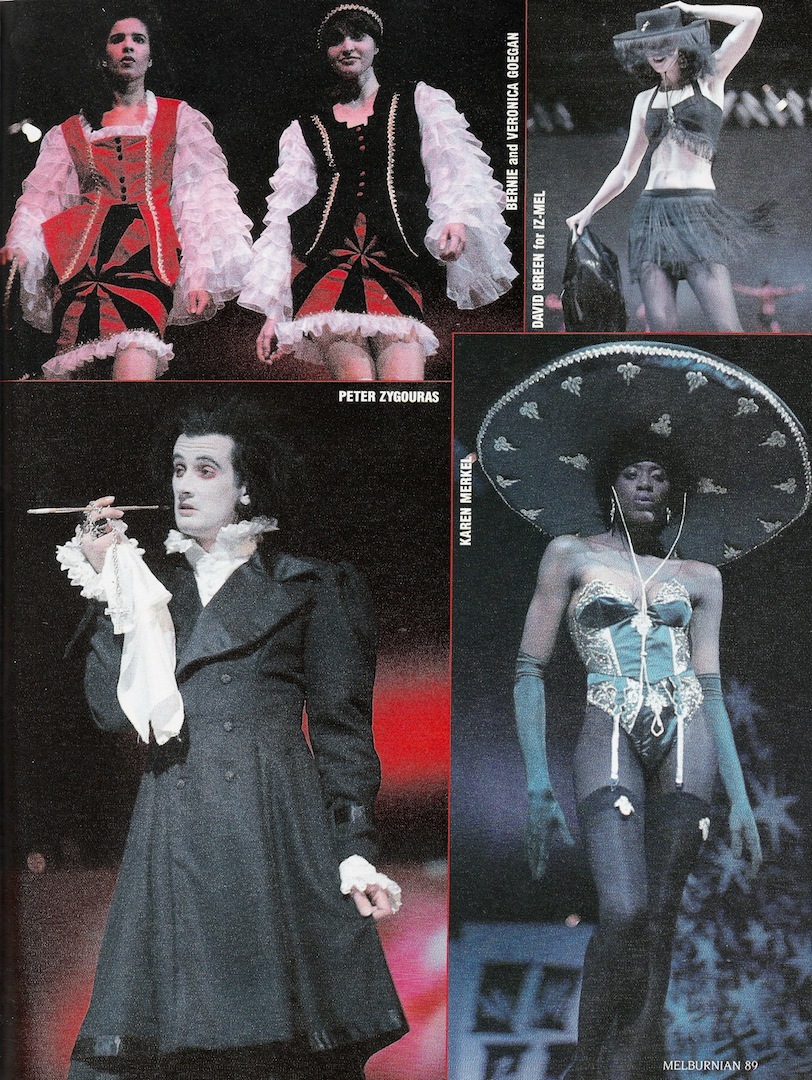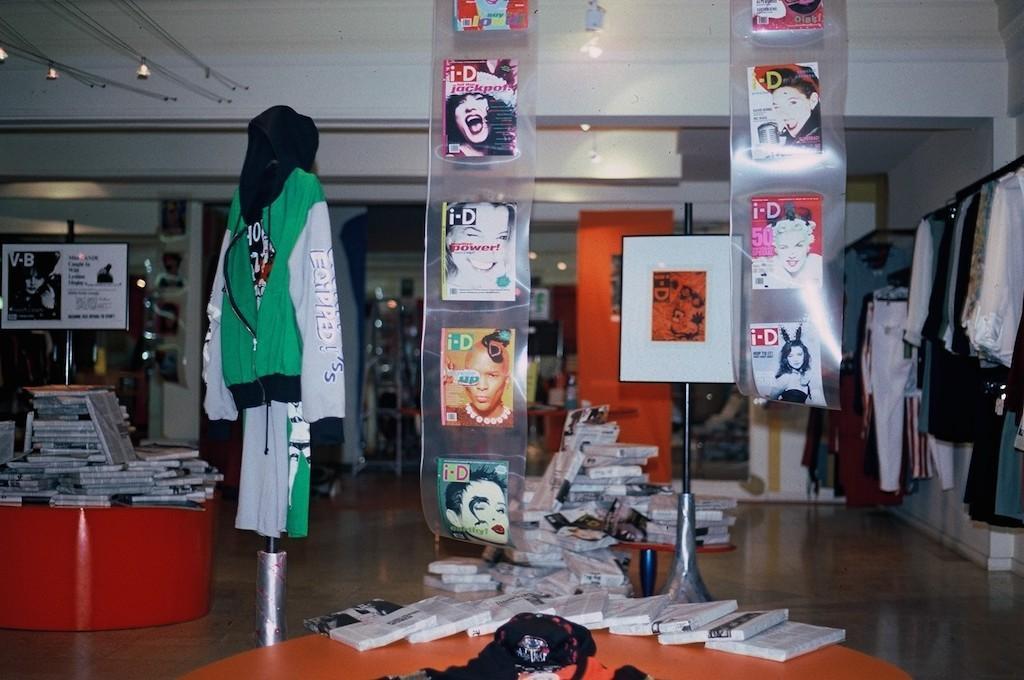In their new exhibition High Risk Dressing / Critical Fashion, the RMIT Design Hub are looking back into Australia’s heritage of style to make sense of fashion now. They’re remembering the legendary Fashion Design Council, a collective that ran from 1983 to 1993. For over a decade the FDC spectacularly redefined contemporary Australian fashion, operating as an avenue for young and emerging creatives.
The team behind High Risk Dressing / Critical Fashion are not only celebrating the group, but also using them as a mirror to contrast and compare with current collectives working in Australian fashion today. They’re presenting the FDC alongside 12 “fashion practitioners”, including Pageant, S!X, D&K, Chorus and Centre For Style‘s Matthew Linde, who will display new work alongside the FDC’s archive of clippings, videos, images and brochures.
Local architectural firms Sibling, WOWOWA and Studiobird are also involved, designing spaces that reference the Council’s history. Rather than dwelling on nostalgia, the exhibition aims to start new conversations about what contemporary fashion means now. To learn more, we spoke with curator and Head of RMIT’s School of Fashion & Textiles Robyn Healy and practitioner Matthew Linde.
How did the exhibition come about?
Robyn: Throughout my whole career, I’ve talked to [FDC co-founder] Robert Buckingham many times about an ‘FDC exhibition’. I was going to do a ten year anniversary at NGV, but then the Council commercially collapsed. Then when I came to RMIT, Robert donated this archive and we had various meetings with professors about what we could do with it. We thought about ways we could activate it differently, looking into this idea of a collective rather than the Council as a satellite of its own.
When the Design Hub opened, it went down on the schedule for several years but we could never work out what it should be. Then I saw 200 Years of Australian Fashion and saw artefacts, clothing, interviews — it didn’t seem to be the way you’d want to represent the Council. There was something else that needed to be communicated when you bring the rabble together from different disciplines. Now things like having fashion parades in derelict buildings is the norm but at the time of a very conservative fashion industry, people were sanctioned within a neat and tidy box labelled ‘Australian fashion.’

Tell us about the name High Risk Dressing/Critical Fashion, and how you see that applying to the FDC and contemporary fashion in general.
Robyn: ‘High risk dressing’ was a term the Council used as both a descriptor and the title of the first film they put together to gain funding. It was about youth employment, looking at diversity and practice, and other opportunities.
All very current topics.
Robyn: That’s why now for me to have a contemporary dialogue there are questions about what it is we fund now? What are the things that are provocateurs? What are ways you can stir people in thinking differently about fashion? We’re setting up these things for people to think about — it’s an ideas exhibition, not a nostalgic one.
The whole project is about the link between the past and the present — what do you make of the FDC’s legacy?
Matthew: The FDC had a raw spirit. That’s the part I really draw from, this bombastic quality. The genesis of the Council is this middle finger to the mainstream, a DIY quality of these improvised performances. In many ways they took the form of a party rather than a well-rehearsed show at fashion week. There is a really profound difference between something like FDC and ‘experimental and emerging fashion’ today.
Robyn: I’m very loose on ‘the legacy.’ There are things that have come out of the FDC that are still evolving, people went to set up bigger enterprise or became involved in things like the Melbourne Fashion Festival. I think there’s something about Melbourne in terms of these independent practices that will continue to evolve. A lot of the practitioners didn’t know about the FDC before the exhibition, but when they started to find out more about it they became quite interested about those sorts of comings together and the events that are staged now.

How involved were the original FDC with the exhibition?
Robyn: They had a light touch. We went to Robert Buckingham and asked if he was okay with this type of approach. He thought this was a great idea and much preferred us looking in terms of relevance to now. We really wanted something that generates new work rather than just documenting what already exists. Then we went to [co-founder] Kate Durham who was very excited too, because they get a bit tired of the same nostalgic rhetoric.
What are your favourite items in the archive?
Matthew: I love watching those early performances. When you read about Party Architecture, this duo that set up these party experiments in which fashion shows would emerge, that for me is the juicy part. That comes back to me in my own research, which is looking at how temporary party modes can create fashion shows. Because parties don’t always go right: people have fights, people cry, people get too wasted. I think transporting that kind of methodology of the party within a fashion practice, as the FDC did, is the exciting part. Looking at the audience being really confused or annoyed or perturbed — that was incredibly inspiring.
Robyn: The thing that I get off on is all the media you can’t play! Do you know how hard it is now to get a VHS recorder? And then also the cassettes! I love the bits that I don’t know what’s in them. I actually like that, in terms of archive, the change in the way you communicate and suddenly there’s all that stuff in there that we can’t just readily access. That is fascinating, it’s a real eye-opener about the speed of technology.
High Risk Dressing / Critical Fashion is open from February 17 to March 18 at the RMIT Design Hub. For more information visit the Hub’s website.
Credits
Text Sasha Geyer
